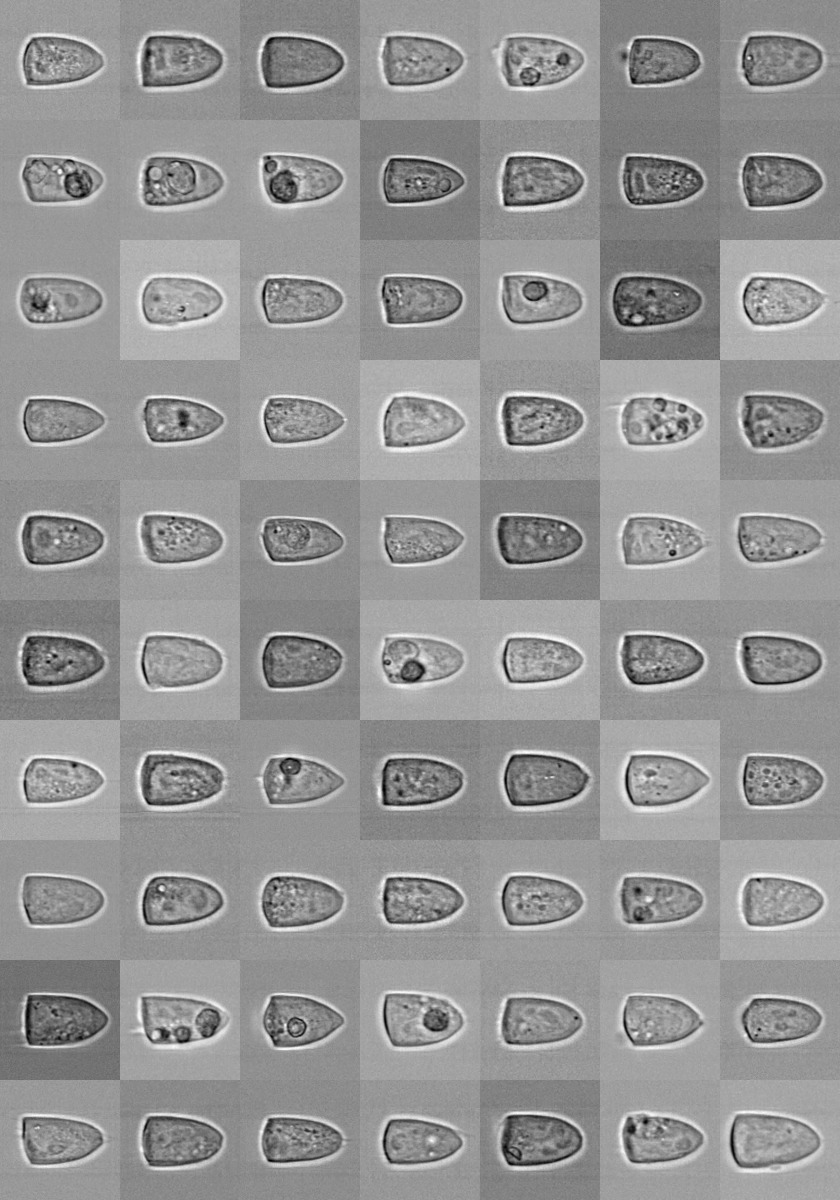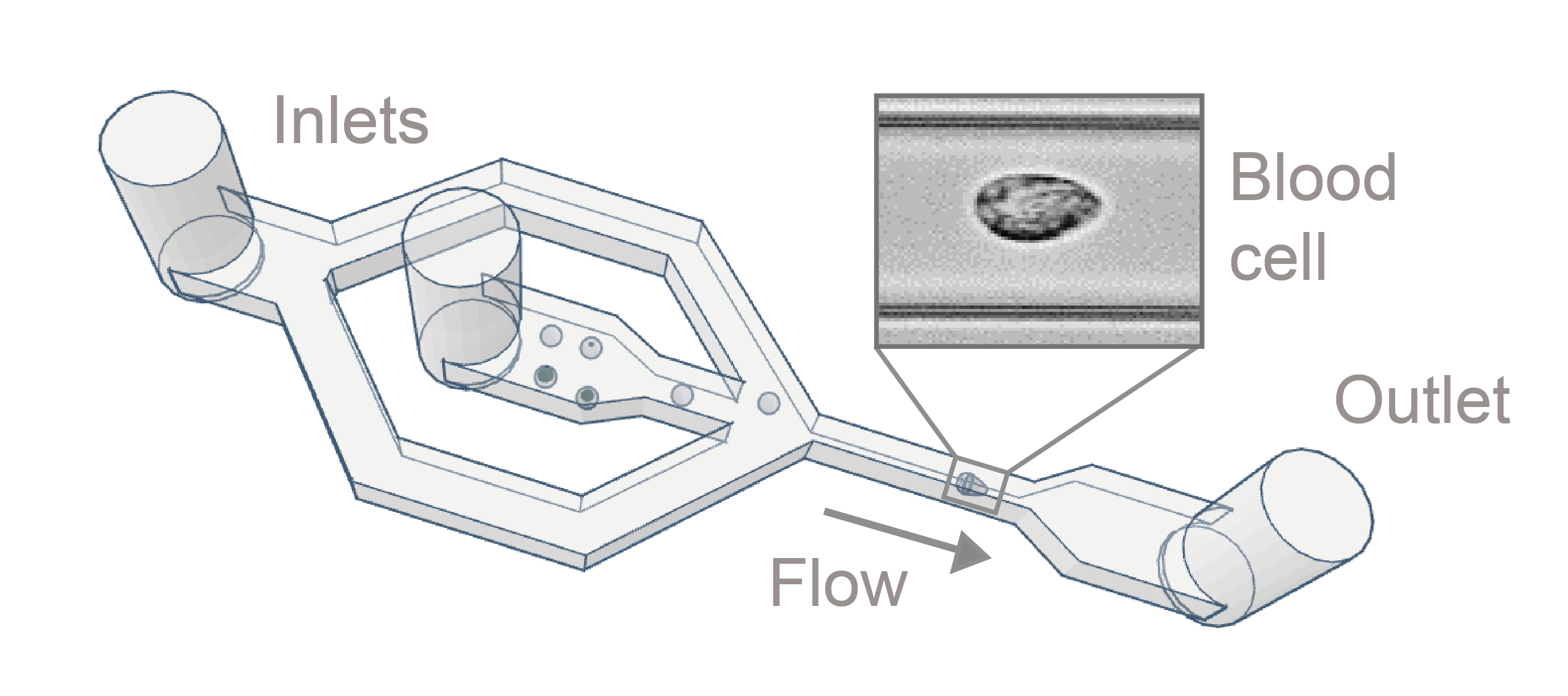Our Technology
We produce devices and software for the analysis of physical phenotypes of cells, including their
deformability, size, and morphological features.
A picture is worth a thousand words
The technology is based on imaging cytometry: thousands of single cells flow quickly through a narrow
microfluidic channel. An image of each cell is captured and analyzed.



Why do physical properties of cells matter?
Physical properties of cells reflect physiological and pathological changes in cell function.
They are promising biomarkers for disease diagnosis and prognosis.
For example, we have recently demonstrated their utility for detecting
blood mechanical changes in the context of COVID-19.
Combined with machine learning, this technology is a discovery machine
for characterizing cell populations and functional states invisible
to marker-based techniques.
An HL-60 cell deforming under shear stress in a microfluidic channel. Video by MPL, licensed CC0.
What is physical phenotyping of cells?
The characterization of single living cells by their physical and morphological features, including size, shape, deformability and other properties. Physical phenotyping adds a new functional, marker-free and unbiased dimension to flow cytometry with diverse applications in biology, biotechnology and medicine.

Scheme of the microfluidic chip used for deformability cytometry. Image by MPL, licensed CC0.
How does it work?
Cells flow through a narrow microfluidic channel, where they deform due to the forces applied. An
image is taken of each
cell. Physical phenotype parameters of the cell are extracted from the image.
Thanks to high-speed video microscopy, our analysis rates of 1,000 cells/s approach those of
conventional fluorescence-based flow cytometers. Hundreds of thousands of cells can be measured within
minutes.
Any cell suspension can be analyzed – blood and other liquid biopsies,
cells from solid tissues, cultured cells. All of this without time- and
material-consuming sample preparation such as staining.
Key publications from our team
-
Otto et al., Real-time deformability cytometry: on-the-fly cell mechanical phenotyping. Nature Methods (2015)
-
Rosendahl et al., Real-time fluorescence and deformability cytometry. Nature Methods (2018)
-
Toepfner et al., Detection of human disease conditions by single-cell morpho-rheological phenotyping of blood. eLife (2018)
-
Nawaz, Urbanska and Herbig et al., Intelligent image-based deformation-assisted cell sorting with molecular specificity. Nature Methods (2020)
-
Urbanska et al., A comparison of microfluidic methods for high-throughput cell deformability measurements. Nature Methods (2020)
-
Kubánková et al., Physical phenotype of blood cells is altered in COVID-19. Biophysical Journal (2021)
-
Soteriou and Kubánková et al., Rapid single-cell physical phenotyping of mechanically dissociated tissue biopsies. Nature Biomedical Engineering (2023)